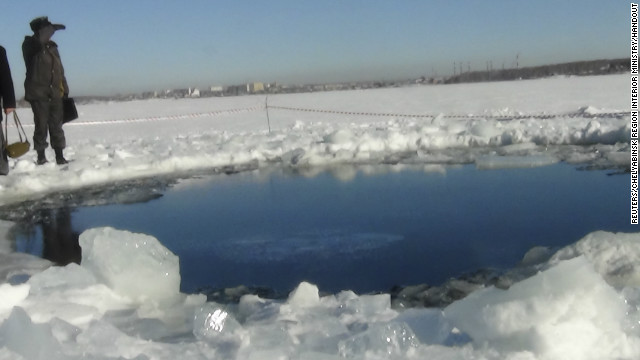A meteor streaked through the skies above Russia’s Urals region Friday morning before exploding with a flash and boom that shattered glass in buildings and left about 1,000 people hurt, authorities said. Described by NASA as a “tiny asteroid,” the meteor’russian comet explosion created a blast in central Russia equivalent to 300,000 tons of TNT, the space agency’s officials said Friday, adding that the incident was a once-in-100-years event.
The injured included more than 200 children. Most of those hurt are in the Chelyabinsk region, though the vast majority of injuries are not thought to be serious. Workers repair a damaged power line near the wall of a local zinc plant. The meteor’s vapor trail passes over the city. A man removes shards of glass from the frame of a broken window.
The meteor damaged windows at a sports hall. By noon Russia time more than 725 people had sought medical help. What is a meteor sonic boom? About 3,000 buildings were damaged — mostly with broken glass — as a result of the shock waves caused by the blast, the state-run RIA Novosti news agency said. Vladimir Stepanov, of the National Center for Emergency Situations at the Russian Interior Ministry, earlier told state media that hospitals, kindergartens and schools were among those affected. About 20,000 emergency response workers were mobilized, RIA Novosti reported. Amateur video footage showed a bright white streak moving rapidly across the sky, before exploding with an even brighter flash and a deafening bang.

The explosion occurred about 9:20 a. It was captured in vivid images by Russians, many of whom used dash cameras inside their vehicles. Dash cameras are popular in Russia for several reasons including possible disputes over traffic accidents and the corrupt reputations of police in many areas. Friday, they were able to document a spectacular natural phenomenon.
He shared on Instagram that it was “close to the ground. The national space agency, Roscosmos, said scientists believed one meteoroid had entered the atmosphere, where it burned and disintegrated into fragments. The resulting meteorites are believed to be scattered across three regions of Russia, one of them Chelyabinsk, as well as neighboring Kazakhstan, the news agency said. One large chunk was discovered in a lake in the Chelyabinsk region, RIA Novosti cited the Chelyabinsk governor as saying.
A spokesman for the Emergency Ministry for the Chelyabinsk region told CNN earlier Friday that 524 people there were injured and 34 hospitalized. For sky watchers, the reports bring to mind the famous Tunguska event of 1908 in remote Siberia, in which an asteroid entered the atmosphere and exploded, leveling trees over an area of 820 square miles — about two-thirds the size of Rhode Island. About 80 million trees were felled, radiating out from the center of the blast, but no crater was left. Friday’s Chelyabinsk meteor came on the same day that a hefty asteroid charged past Earth. An asteroid makes a close call.
Known as 2012 DA14, the asteroid is thought to be 45 meters long, about half the length of a football field. But scientists say it came not much closer than 17,100 miles from our planet’s surface. Officials from around the world were quick to call for greater vigilance in monitoring meteors. Today’s event is a strong reminder of why we need continuous efforts to survey and identify near-Earth objects,” said Thomas Reiter, European Space Agency’s Director of Human Spaceflight and Operations. Deep Space Industries, a recently created space exploration company, said countries should be proactive in establishing “a sentry line of spacecraft circling the Earth to intercept and evaluate incoming threats.
The hundreds of people injured in northern Russia show it’s time to take action and no longer be passive about these threats,” said Rick Tumlinson, chairman of Deep Space Industries. This graphic shows the path Asteroid 2014 RC will take as it passes Earth on Sunday, September 7. The space rock will come within one-tenth the distance from Earth to the moon, but it is not expected to threaten the planet. September 2013 when it passed close by Earth. Asteroid 1998 QE2 is about 3. Asteroid 2012 DA14 made a record-close pass — 17,100 miles — by Earth on February 15, 2013. Most asteroids are made of rocks, but some are metal.
They orbit mostly between Jupiter and Mars in the main asteroid belt. Another asteroid, Apophis, got a lot of attention from space scientists and the media when initial calculations indicated a small chance it could hit Earth in 2029 or 2036. If you really want to know about asteroids, you need to see one up close. The first asteroid to be identified, 1 Ceres, was discovered January 1, 1801, by Giuseppe Piazzi in Palermo, Sicily.





